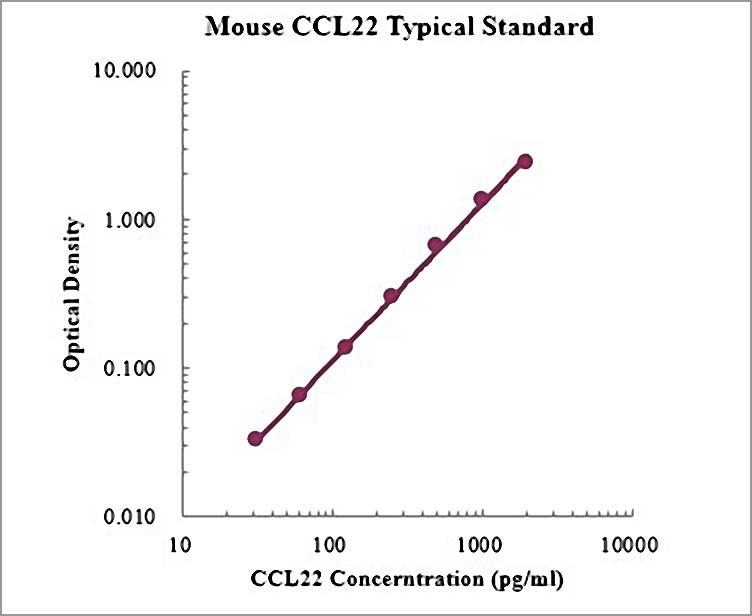Specifications
SHIPPING NOTES
Storing antibodies at various temperatures (up to 40°C) for one week does not affect their activity. As a precautionary measure, we ship all products in insulated packaging with cold packs to provide extra temperature stability in transit. The cold packs may be thawed when you receive the shipment, please be assured that this is normal and your product(s) are safe to use. Once you have received your product(s), please follow the storage instructions on the datasheet(s).
COUNTRY OF ORIGIN
United States of America
APPLICATION
Sandwich ELISA
*USAGE / SAFETY STATEMENT
This product is for research use only. It is not intended for diagnostic or therapeutic use.
CROSS REACTIVITY
This assay has shown no significant cross-reactivity.
DETECTION METHOD
Colorimetric
SPECIFICITY
This kit can assay both natural and recombinant mouse CCL22.
PRODUCT RANGE
31.25 - 2000 pg/ml
BACKGROUND
The chemokine (C-C motif) ligand 22 (CCL22), also known as macrophage-derived chemokine (MDC), is a member of the CC chemokine family. Cells known to express CCL22 include B cells, microglia, dendritic cells and macrophages, monocytes, IFN-γ-activated keratinocytes, colonic columnar epithelium, CD4+ T cells, thymic medullary epithelium (Hassal’s corpuscles), and activated NK cells.
CCL22 plays an important role in lymphocyte migration. CCL22 is a potent chemoattractant for cell types including dendritic cells, thymocytes, and activated NK cells. CCL22 produced by antigen-presenting dendritic cells chemoattracts CCR4-bearing activated (or memory) T cells to enhance immune responses and increase effector functions. Additional functions reported for CCL22 include the activation of platelet function and inhibition of synaptic transmission between hippocampal neurons.
SAMPLE TYPE
Cell culture supernatant, serum and plasma.
PRINCIPLE ASSAY
Mouse CCL22 ELISA Kit is based on the quantitative sandwich enzyme-linked immunosorbent assay technique to measure concentration of mouse CCL22 in the samples. A monoclonal antibody specific for mouse CCL22 has been immobilized onto microwells. Standard or samples are pipetted into the wells, followed by the addition of biotin-linked monoclonal antibody specific for CCL22, and CCL22 present is bound by the immobilized antibody and detect antibody following the first incubation. After removal of any unbound substances, streptavidin-HRP is added for a second incubation. After washing, substrate solution reacts with HRP and color develops in proportion to the amount of CCL22 bound by the immobilized antibody. The color development is stopped by addition of acid and the optical density value is measured by microplate reader.
ASSAY TYPE
Sandwich (quantitative)
RECOVERY
84% (Average Recovery from Serum Samples).


